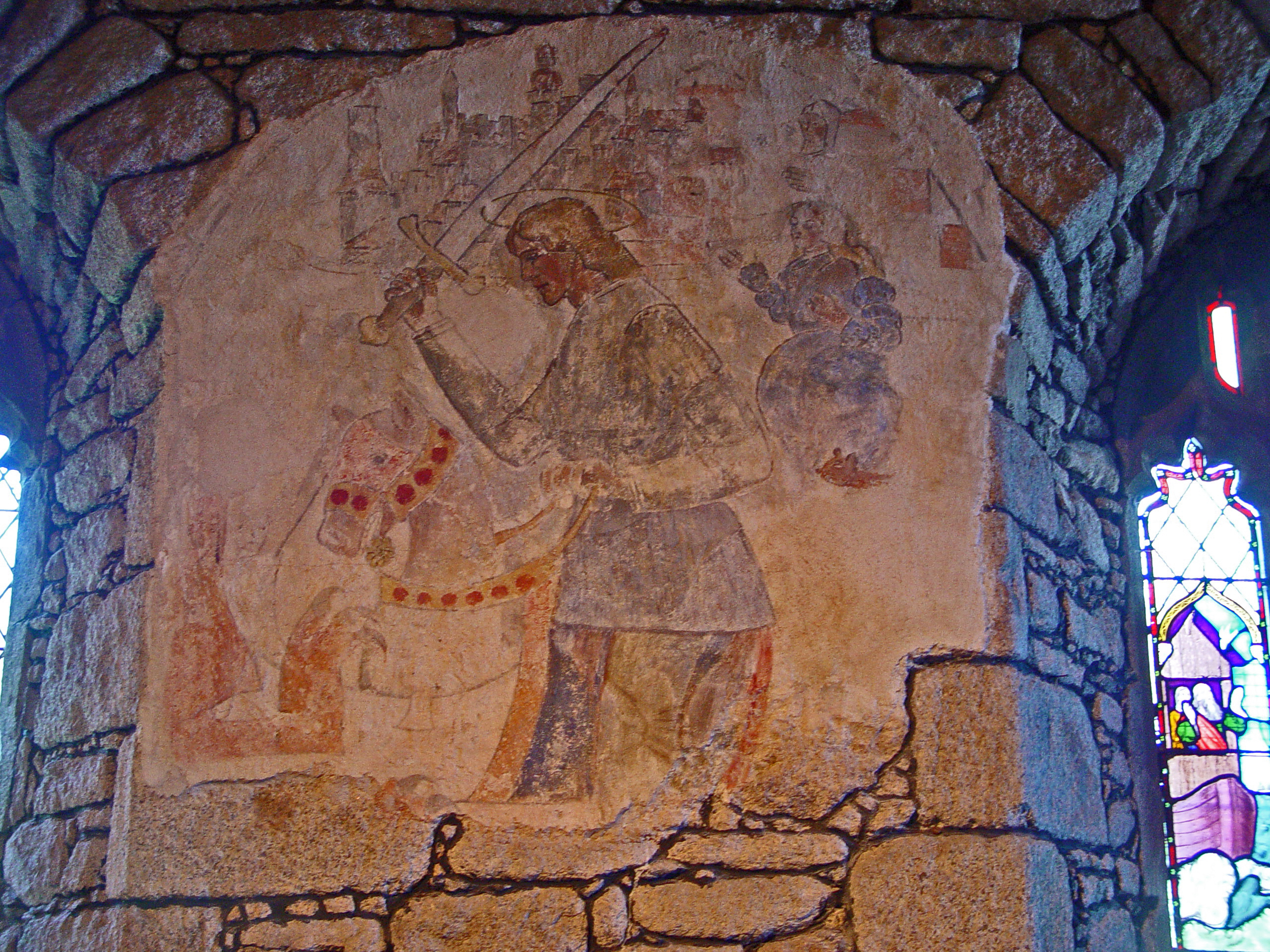a secco on:
[Wikipedia]
[Google]
[Amazon]
 Fresco-secco (or a secco or fresco finto) is a wall painting technique where pigments mixed with an organic binder and/or lime are applied onto a dry plaster. The paints used can e.g. be casein paint, tempera, oil paint, silicate mineral paint. If the pigments are mixed with lime water or lime milk and applied to a dry plaster the technique is called lime secco painting.
The secco technique contrasts with the
Fresco-secco (or a secco or fresco finto) is a wall painting technique where pigments mixed with an organic binder and/or lime are applied onto a dry plaster. The paints used can e.g. be casein paint, tempera, oil paint, silicate mineral paint. If the pigments are mixed with lime water or lime milk and applied to a dry plaster the technique is called lime secco painting.
The secco technique contrasts with the
 *
*
The fresco technique
 Fresco-secco (or a secco or fresco finto) is a wall painting technique where pigments mixed with an organic binder and/or lime are applied onto a dry plaster. The paints used can e.g. be casein paint, tempera, oil paint, silicate mineral paint. If the pigments are mixed with lime water or lime milk and applied to a dry plaster the technique is called lime secco painting.
The secco technique contrasts with the
Fresco-secco (or a secco or fresco finto) is a wall painting technique where pigments mixed with an organic binder and/or lime are applied onto a dry plaster. The paints used can e.g. be casein paint, tempera, oil paint, silicate mineral paint. If the pigments are mixed with lime water or lime milk and applied to a dry plaster the technique is called lime secco painting.
The secco technique contrasts with the fresco
Fresco (plural ''frescos'' or ''frescoes'') is a technique of mural painting executed upon freshly laid ("wet") lime plaster. Water is used as the vehicle for the dry-powder pigment to merge with the plaster, and with the setting of the plaste ...
technique, where the painting is executed on a layer of wet plaster.
Because the pigments do not become part of the wall, as in buon fresco, fresco-secco paintings are less durable. The colors may flake off the painting as time goes by, but this technique has the advantages of a longer working time and retouchability. In Italy, fresco technique was reintroduced around 1300 and led to an increase in the general quality of mural painting. This technological change coincided with the realistic turn in Western art and the changing liturgical use of murals.
The treatise ''Silparatna'' by Kumaradeva (8th century) gives an account of the fresco-secco painting technology in detail. According to this text, a picture should be painted with appropriate colours, along with proper forms and sentiments ( rasas), and moods and actions (''bhavas''). White, yellow, red, black and terre verte are pointed out in the text as pure colors. Different shades were also prepared from these original colors. Five types of brushes with various shapes and size (flat, long, medium, etc.) made of animal hair and grass fibre are also recommended.
Specialist painter and decorators still use this technique to great effect in the world of interior design e.g. faux marble.
Notable fresco-secco artists
* Giotto * June McEwan, Scottish artist who recreates historic Scottish interiors. * Beohar Rammanohar Sinha, artist from India whose frescoes ornamentate the walls and gigantic dome of the ''Shaheed-Smarak'' or India's Martyrs' Memorial Auditorium. Episodes, accomplishments and landmark-events in India's struggle for independence are depicted. *
* Rudolph F. Zallinger
Rudolph Franz Zallinger (; November 12, 1919 – August 1, 1995) was an American-based Austrians, Austrian-Russians, Russian artist. His most notable works include his mural ''The Age of Reptiles'' (1947) at Yale University's Peabody Museum of Na ...
- whose '' Age of Mammals'', a mural painted from 1961 to 1967 on the south wall of the Yale Peabody Museum of Natural History, is painted in this style.
See also
* Art movement * Creativity techniques *List of art media
Arts media is the material and tools used by an artist, composer or designer to create a work of art, for example, "pen and ink" where the pen is the tool and the ink is the material. Here is a list of types of art and the media used within those ...
* List of art movements
* List of most expensive paintings
* List of most expensive sculptures
* List of art techniques
A ''list'' is any set of items in a row. List or lists may also refer to:
People
* List (surname)
Organizations
* List College, an undergraduate division of the Jewish Theological Seminary of America
* SC Germania List, German rugby union ...
* List of sculptors
External links
The fresco technique
References
Fresco painting Painting techniques {{Painting-stub